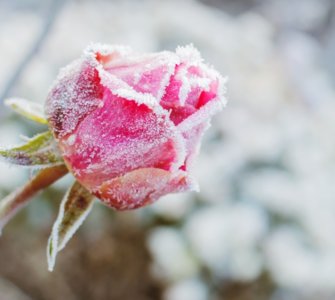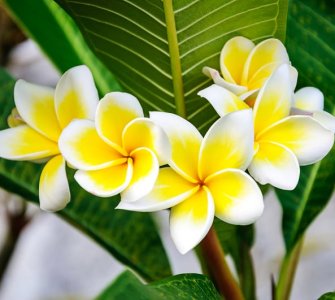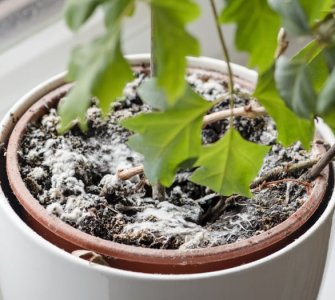Plant grow lights have opened up a whole new world for indoor gardeners. Thankfully, LED grow lights emit very little heat, so, unlike some other grow light systems, there isn’t too much chance of scorching your precious plants. Finding the optimal distance between the canopy of the plants and the lights often requires some experimentation and close observation to find the sweet spot.
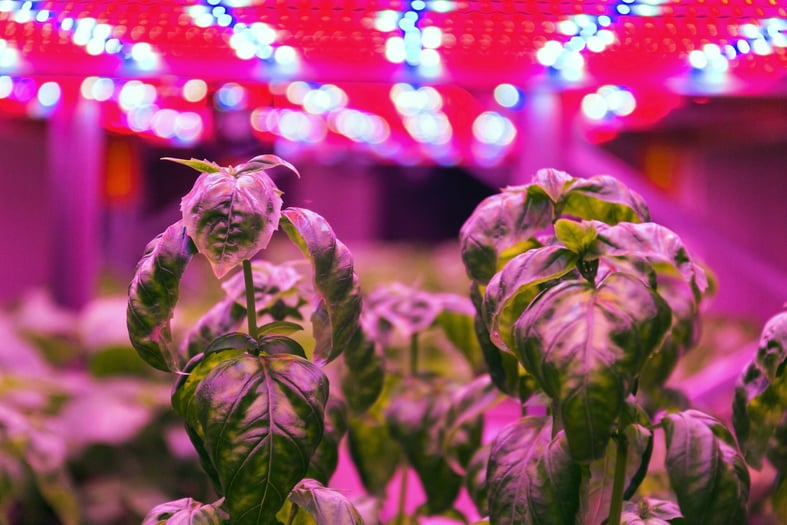
LED grow light setups of 1000 watts should be at least 36 inches above the canopy of the plants. Lower-wattage LED arrays of around 200 watts usually hang 18 inches above plants. Adjustments should be made according to the type of light setup and the growth stage of the plants.
Instead of being ruled by the seasons and variable light, your favorite indoor plants can thrive year-round. Adding grow lights is, however, not without its challenges. Like all new technology, you need to understand how to use it, so your plants get enough light without feeling like they are on a tanning bed.
Table of Contents
How Far Should LED Grow Lights Be From Plants?
Indoor gardening using LED grow lights has become popular since the setups are energy efficient and don’t heat up much. This makes LED lighting the safest choice, especially for novice indoor gardeners who may run the risk of accidentally scorching their plants.
To get the most from an LED grow light setup, plants need to be positioned at the correct distance from the light source. Too far and plants won’t benefit – too close, and the leaves can start turning yellow and becoming bleached from too much light.
There are two ways that LED grow light intensity can be adjusted:
- Physically moving the light or plant closer or further away.
- Some LED grow light setups have dimmer switches to adjust intensity.
What is essential is that you know the wattage of the LED grow light system that you have or need. Some home setups are as low as 32 watts, and others can be over 2000 watts! That’s a lot of extra light!
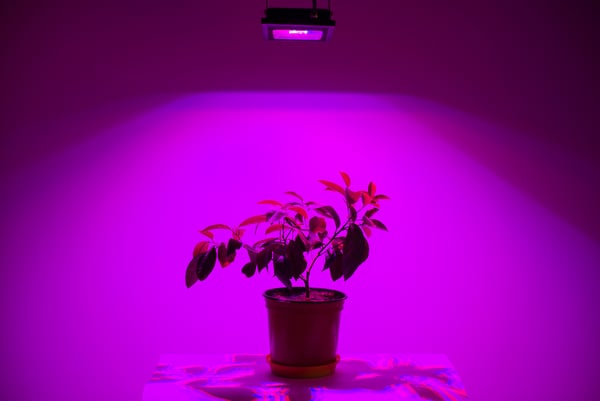
The greater the wattage, the further away from the canopy of the plants the lights can be. So, a 60-watt globe can be as close as 12 inches from the top of plants, while the higher wattage setups may cover more area, but they should be further away.
While the wattage is important, the focus of the grow light array is also a factor. A focused light bulb will have a narrower surface reach than a plant stand with grow lights.
How To Use LED Grow Lights For Indoor Plants
Since LED grow light systems can have quite a few variations, owners must familiarize themselves with their particular setup. In our excitement to get our plants basking in their own tropical sunshine zone, many of us (GUILTY!) don’t take the time to read the instruction pamphlet.
Each manufacturer will provide detailed breakdowns about the wattage, type of reflectors, and other details affecting how far the grow lights should be set up from the plants. Even if you are not a tech-head, grow light systems are easy to understand and exciting to use.
The function of grow lights is to replicate natural sunlight and provide the plant with enough of what it needs to photosynthesize and grow as it would in its natural habitat. LED grow lights are like your plant’s own little pockets of sunshine, even during the middle of winter.
Let’s take a look at some specific grow light wattages, so you know which is best for your plant collection.
How Far Should 60W LED Grow Lights Be From Plants?
60 – 100W LED Grow Light systems are often enough for indoor gardeners who just need to add a little brightness to specific plants in their collection. They are a great way of extending plant space, so you don’t need to clutter everything around your windows during winter.
While there is often less natural light indoors over winter, ambient light still works as a supplemental light source. You can also amp up your low-wattage LED light array by adding a reflective surface behind your plants – that way, more light reaches the surface of your plants without needing to bring the lights down dangerously close to the foliage.
Low-wattage LED lights can usually safely be used from about 12 inches above the plant canopy. Slight adjustments can be made according to the type of plant being grown, but the lower the wattage, the closer lights can be situated to the top of your plants.
How Far Should 600W LED Grow Lights Be From Plants?
A 600-watt LED grow light system, like this one from Enjoyield, is ideal for a growing space of around 2ft x 2ft. Lights need to be adjusted according to the developmental phase of the plants below as follows:
| Seedlings | Up to 36 Inches |
| Vegetative | 18 – 30 inches |
| Flowering | 14 – 20 inches |
You will notice that the space between the lights and the plants gets smaller as the plants get closer to blooming. This standard rule can be applied to all LED grow light setups.
How Far Should 2000W Grow Lights Be From Plants?
Anyone with an extensive indoor plant collection may need an LED grow light system that lends itself to specific plant types. Remember, some plants, like your indoor miniature roses, need more ‘sunlight’ than others, like parsley.
2000W LED grow light setups can be set up considerably higher than lower wattage systems. A minimum height would be 36 inches, and depending on the type of plants you are growing, it may need to be even higher.
Plants must be arranged under the lights in terms of variety and growth stage. Grow lights are also an excellent way to get veggie seedling trays started indoors and get a jump start on spring.
Do I Need A Different Type of Grow Lights For Seedlings?
LED grow lights are perfect for seedlings, but you may need to move the lights closer to the developing plants for optimal development. Remember that in addition to supplying sufficient light, all other requirements in terms of temperature, growing medium and watering need to be met.
While seeds are germinating, keep the LED lights a bit higher and move them closer when you see the seedlings pop out of the ground. Adjust the amount of available light to support the plant’s growth phases.
Experiment with how far your LED grow lights need to be from your plants to ensure the healthy development of the plants. A downside to using grow lights is that spider mites love them almost as much as your plant. The lack of natural air movement around plants can be a magnet for these pests, so keep a lookout, run a fan occasionally and always stay armed with a bottle of neem oil spray. There are no houseplants that can survive without sunlight. Some can manage with low light, but most flowering plants and herbs need plenty of sunshine. LED grow lights are ideal for keeping your indoor herb garden flourishing. Even finicky sun-lovers like aromatic rosemary will enjoy basking in the artificial LED rays year-round.
